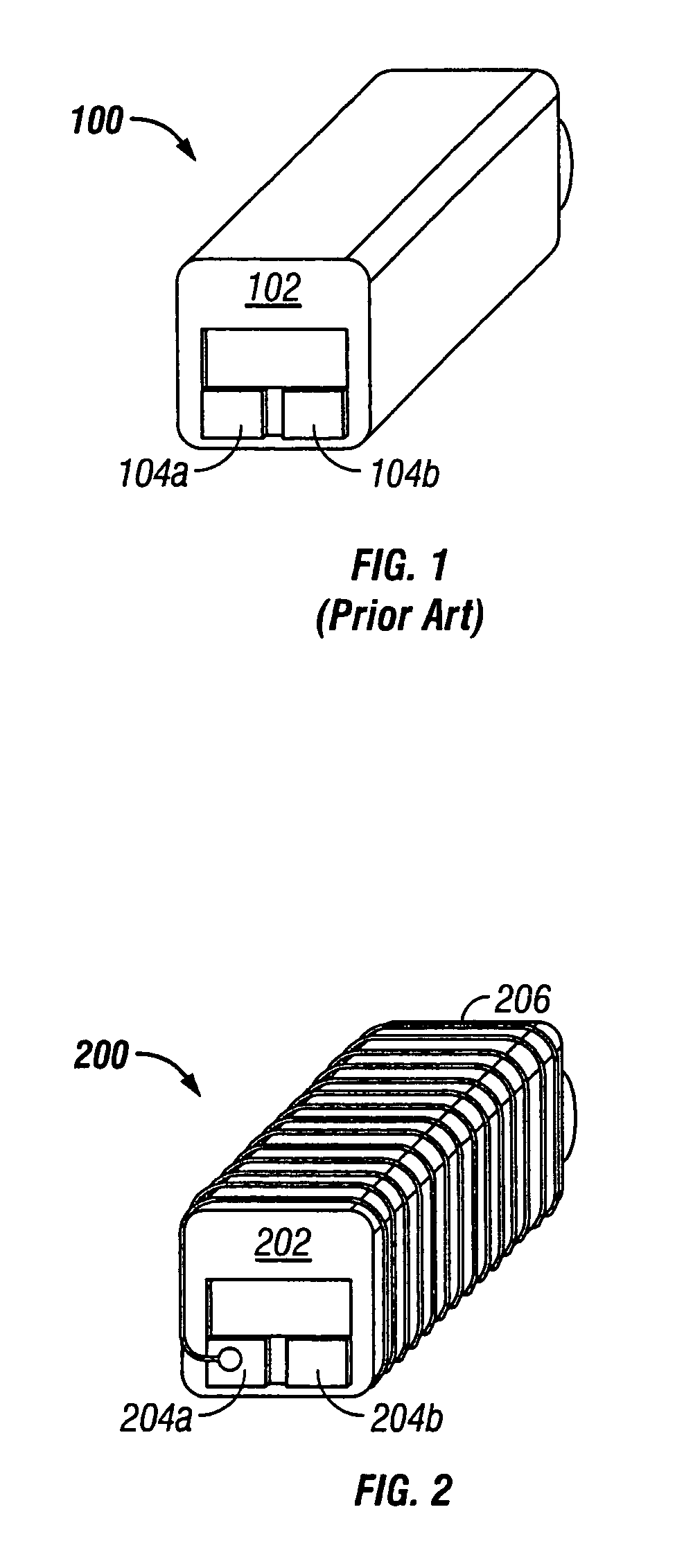Radio frequency shielding for receivers within hearing aids and listening devices
a receiver and radio frequency technology, applied in the field of miniature receivers, can solve the problems of reducing the dimensions of the listening device, not having a lot of power available for transmitting radio frequency signals, and the batteries of listening devices such as hearing aids are typically very small, so as to reduce or eliminate the interference generated by the receiver, reduce or eliminate the interference from the receiver
- Summary
- Abstract
- Description
- Claims
- Application Information
AI Technical Summary
Benefits of technology
Problems solved by technology
Method used
Image
Examples
Embodiment Construction
[0028]As mentioned above, the housing or casing that encloses most listening device receivers is virtually transparent to the electromagnetic emissions from the class D switching amplifier housed therein. Any solution involving a counteracting field or a noise cancellation algorithm would add unwanted complexity and be difficult to implement in any case because the pattern of electrical and magnetic fields emitted by the class D amplifier is unpredictable. Therefore, in accordance with the principles and teachings of the invention, an electrically conductive shield is placed over a substantial portion of the receiver housing. The electrically conductive shield helps suppress the electromagnetic signals emitted from the receiver, thereby reducing or eliminating the interference produced therefrom.
[0029]Although embodiments of the invention are discussed herein with respect to a class D switching amplifier, those of ordinary skill in the art will recognize that the invention may be ap...
PUM
 Login to View More
Login to View More Abstract
Description
Claims
Application Information
 Login to View More
Login to View More - R&D
- Intellectual Property
- Life Sciences
- Materials
- Tech Scout
- Unparalleled Data Quality
- Higher Quality Content
- 60% Fewer Hallucinations
Browse by: Latest US Patents, China's latest patents, Technical Efficacy Thesaurus, Application Domain, Technology Topic, Popular Technical Reports.
© 2025 PatSnap. All rights reserved.Legal|Privacy policy|Modern Slavery Act Transparency Statement|Sitemap|About US| Contact US: help@patsnap.com



